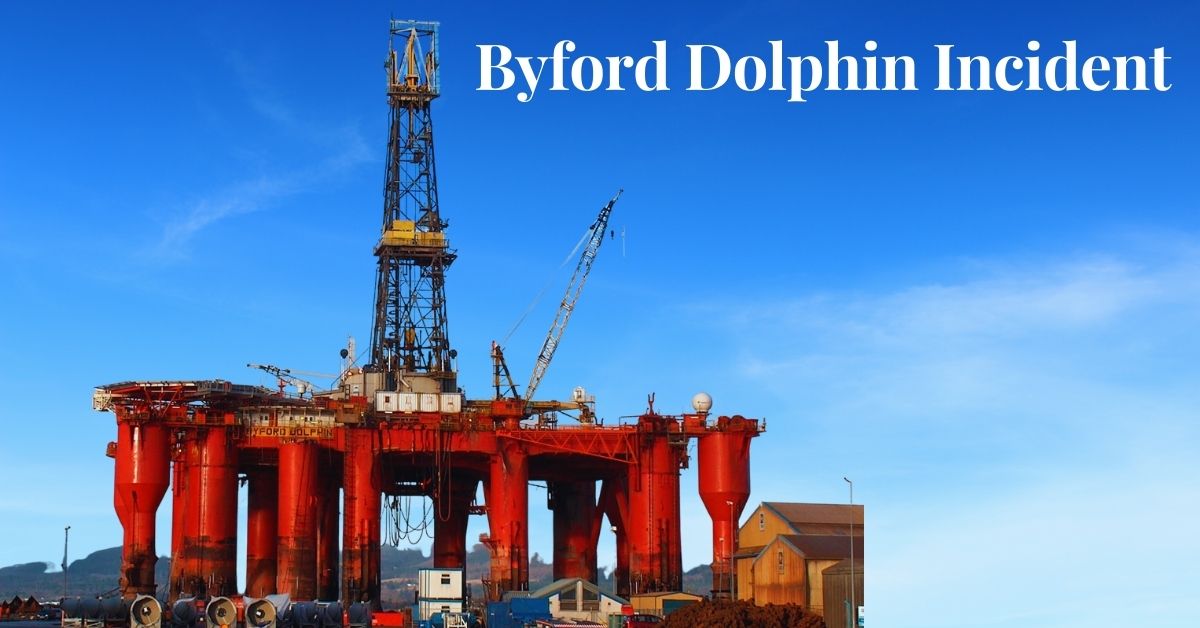Dolphin Drilling, a division of Fred Olsen Energy operated the semi-submersible, column-stabilized Byford Dolphin. It did seasonal drilling in the North Sea for several corporations based in the United Kingdom, Denmark and Norway.
Hamilton, Bermuda is where the company’s registration was created. There were several tragic incidents on the rig, the worst of which was an explosive decompression in 1983 that k!lled four divers, severely injured another dive tender, and severely damaged the rig.
Byford Dolphin Incident: Devastating Explosion
On November 5th, 1983, a horrific diving tr@gedy took place on the Byford Dolphin, a North Sea oil rig. Four divers and a crew member who was helping them were k!lled instantaneously when their air tanks exploded.
At such intense pressures, the opening of merely a single hatch during a routine process was enough to cause the accident.
At 4:00 a.m. four divers were working in a diving chamber system on the rig’s deck which was connected through a trunk (a short tube) to a diving bell, drilling in the Frigg gas field in the Norwegian section of the North Sea.
Among the divers were Truls Hellevik (Sweden), Bjrn Giaever Bergersen (Norway), Edwin Arthur Coward (Britain), and Roy P. Lucas (Britain).
Two dive tenders, British 32-year-old William Crammond and Australian 32-year-old Martin Saunders helped them out. Before the incident, a trunk was installed connecting decompression chambers 1 and 2 to a diving bell. There was also a third, unused chamber.
Crammond and Saunders, both seasoned divers used a clamp to maintain the seal at the connection established by the trunk. With a pressure of 9 atm, chamber 2 was where Coward and Lucas were resting. After a dive, Bergersen and Hellevik were winched up in the diving bell and attached to the trunk.
The two divers climbed into chamber 1 via the trunk, leaving their wet gear behind. After the first two were finished, Crammond, for some reason, opened the clamp sealing the trunk before Diver 4 (Hellevik) could seal the door to the room.
This caused the chamber pressure to drop from nine atmospheres to one atmosphere of the unprotected chamber system via an explosive decompression.
The two tenders were struck by the bell as air rushed out of the chamber system at such a rate of speed that it jammed the inside trunk door and pushed the bell aside. The four divers were killed, while Crammond, one of the tenders and Saunders, another were both seriously hurt.
If you’re interested in reading more about disasters, check out the articles below:
- Tokaimura Nuclear Accidents: The Deadly Consequences of the PNC Incidents
- Chemicals from the Railway Disaster May Cause Rashes, Headaches and Other Problems in East Palestine
- In 84 Years, Turkey Has Not Experienced a Natural Disaster on This Scale
If you’re interested in reading more about additional tragedies and incidents of this type, bookmark our website venturejolt.com and check out our most recent posts.
